Blog
What is Earth Day?
Read more20 of the most fascinating animals in North America
From the High Arctic regions of Canada and Alaska where Arctic wolves roam to the deserts of the US Southwest and Mexico that the Gila monster calls home, North America is a biodiverse continent filled with a vast array of wildlife.
Unfortunately, many species across the continent face threats to their survival due to issues like habitat loss, human-wildlife conflict, and climate change. To learn more about what IFAW is doing to mitigate these threats, check out our projects or see how you can get involved.
Let’s take a look at 20 of the most fascinating animals in North America, selected by our US, Mexico, and Canada team members.
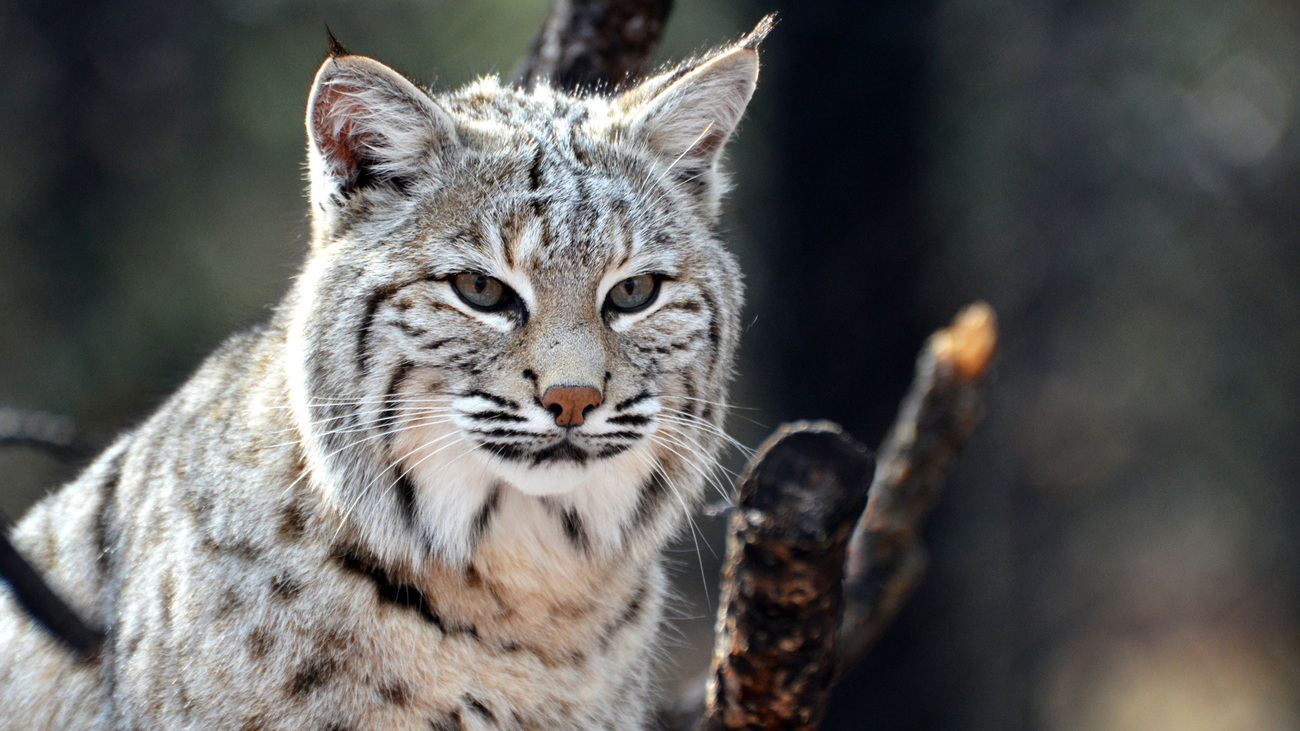
Characterized by its long, dense fur, snowshoe-like paws, and black-tufted ears, the Canada lynx (Lynx canadensis) is native to Canada and the US states of Alaska, Maine, Montana, Washington, Minnesota, Colorado (and possibly Wyoming, Wisconsin, Michigan, and New Hampshire). They live in boreal forests and mainly target snowshoe hares as prey. The Canada lynx’s large feet help it traverse snowy areas. Though they are much larger than house cats, lynx are not considered big cats like tigers and lions. They are about 75 to 90 centimetres (30 to 35 inches) long and weigh 6 to 14 kilograms (15 to 30 pounds). The IUCN classes this species as least concern.
The Gila monster (Heloderma suspectum) is the largest living lizard in the US and the country’s only venomous lizard. Found in parts of Arizona, California, Nevada, New Mexico, Utah, and northwestern Mexico, the Gila monster is recognised by its orange and black stripes and spots. Despite its name, it is typically sluggish and does not generally attack humans. Its venom is typically not fatal. In fact, more often, humans persecute it because of its fearsome reputation—despite its status as a protected species in Arizona. Its name derives from the Gila River Basin, where it was once abundant.
The Gila monster has near threatened status on the IUCN Red List. It faces the illegal wildlife trade, habitat loss, and road traffic, as it is often struck by vehicles.
Not to be confused with the ringtail lemur, the ringtail (Bassariscus astutus) is a species in the raccoon family. Its range spans all the way from Louisiana and Arkansas to California and southern Oregon in the US and as far south as Oaxaca in Mexico. The state mammal of Arizona, the ringtail is known by many names—such as the ring-tailed cat, miner’s cat, civet cat, and cacomistle. Despite these nicknames, it’s not actually a cat. A fun fact is that its scientific name means ‘clever little fox’ in Latin.
The ringtail has dark brown to black fur with pale underparts. Its face is similar in shape to a fox’s, and it has long whiskers and black fur around its eyes. Its tail is its most recognisable feature—it’s about the same length as its body and is ‘ringed’ by black and white stripes.
Ringtails can survive for abnormally long periods of time without drinking water (getting it instead from the food they consume)—they have the most concentrated urine of any mammal studied. This adaptation allows ringtails to conserve water. The ringtail is classed as least concern by the IUCN.
The thick-billed parrot (Rhynchopsitta pachyrhyncha) is a red and green parrot formerly native to the US and now only found in Mexico. Thick-billed parrots are known to make sounds similar to human laughter.
Following the extinction of the Carolina parakeet, which was last seen in the wild in 1910, the thick-billed parrot was the last surviving parrot species known to inhabit the US. However, it reportedly disappeared from the country in the 1990s.
The thick-billed parrot is endangered with fewer than 2,800 individuals remaining, as of 2024. Its primary threat is deforestation, largely the result of commercial logging. Less than 0.06% of the original old-growth forest it inhabits in the Sierra Madre Occidental ecoregion remains. Illegal trade and climate change also pose historic and current threats to this species.
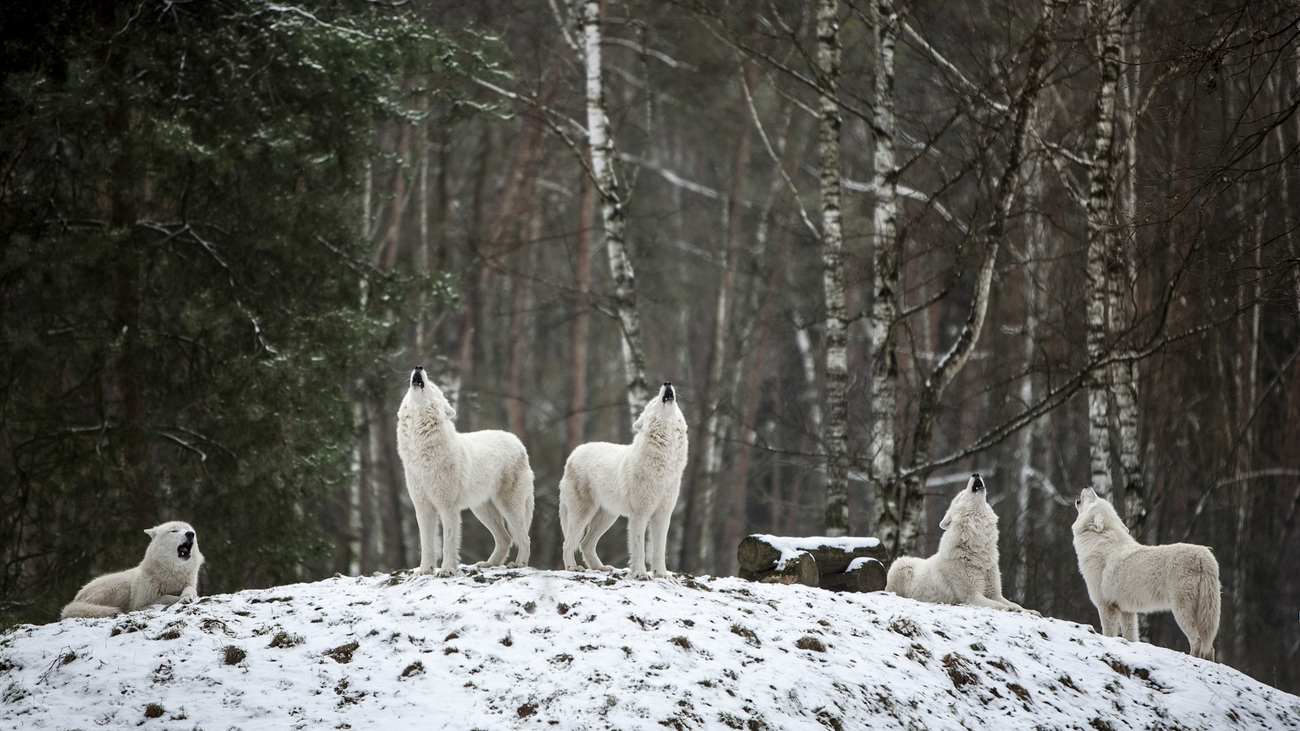
Native to the High Arctic region of Canada, Alaska, and Greenland, the Arctic wolf (Canis lupus arctos) is a subspecies of the grey wolf. These wolves have white coats year-round, which provide camouflage in their permanently snow-covered habitats—one of the most remote habitats in the world. Arctic wolves are well adapted to frigid temperatures and can survive through the harsh, almost permanently dark winters, able to live for several weeks without food. They don’t even need to hibernate.
These wolves live far north of the range of most human civilisation—they’ve never been hunted or displaced by agriculture or industrialization, which may explain why they’re unafraid of humans. As of 2025, they are listed on the IUCN Red List as least concern. However, increasing global temperatures and the growing industrialization of the Arctic are likely to pose a threat to Arctic wolves in the near future.
The North American beaver (Castor canadensis) is the largest rodent in North America. It is one of the few animals that can vastly modify their habitats with the structures it builds—beavers live in ponds that they create by making dams in streams. The beaver is native to almost the entirety of the continental US and Canada, and it’s found as far south as northern Mexico.
Though beavers are often thought of as pests, they are vital to their wetland habitats. When they build dams, they cause floods and create wetlands, on which many animals rely.
Beavers mate for life and will only seek another if their mate dies. They are also great swimmers, as they have webbed feet. Their large, flat tails are used for balance while building and as a communication method—they can slap the water to warn their families of danger. North American beavers are classed as least concern on the IUCN Red List.
The alligator snapping turtle (Macrochelys temminckii) is the largest freshwater turtle in North America. They are native to the US Southeast. They are known for their large, menacingly spiky shells, reminiscent of dinosaurs like the Ankylosaurus. Their jaws are powerful, known to bite through the handle of a wooden broom. Their diet is mostly carnivorous and consists of fish, mollusks, amphibians, and carrion.
Listed as vulnerable, the alligator snapping turtle faces threats including habitat alteration, trapping for its meat, pollution, and pesticides.
Alligator snapping turtles are classed as vulnerable on the IUCN Red List. Threats to their survival include habitat alteration, trapping for its meat, pollution, and pesticide use.
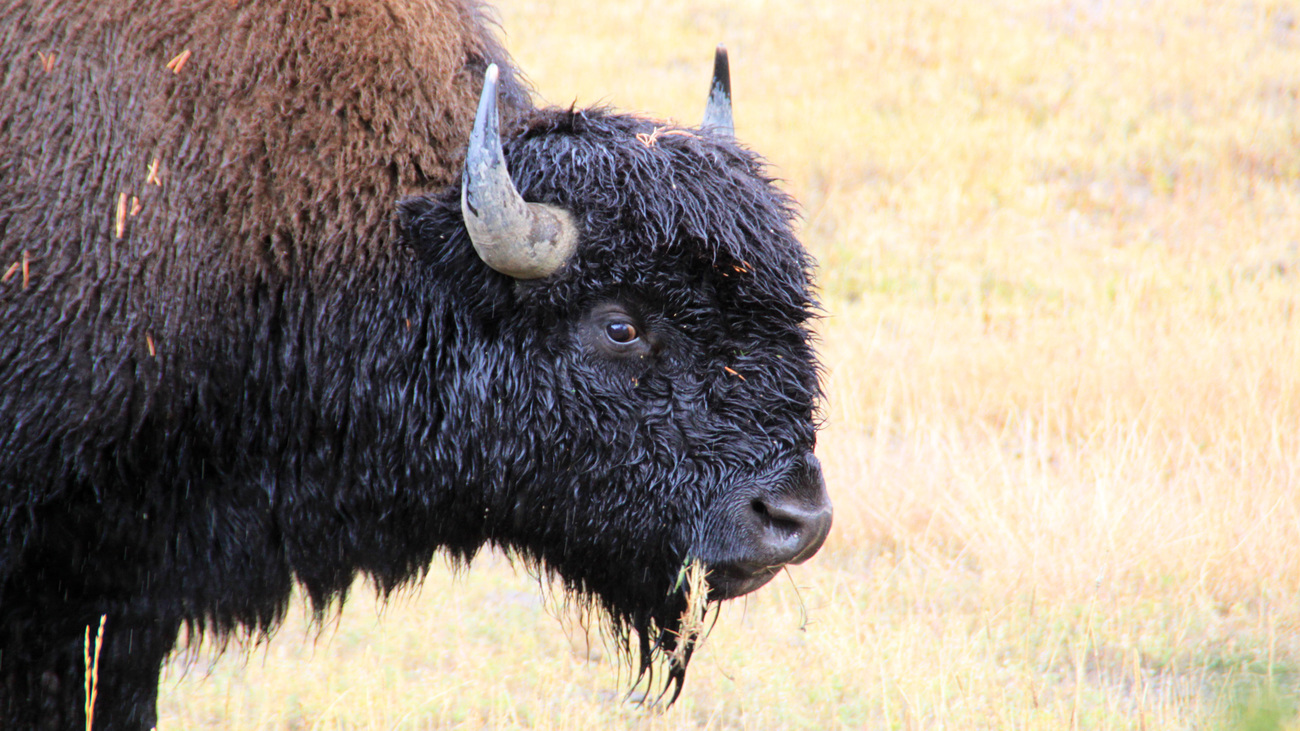
The largest land animal in North America, the American bison (Bison bison) stands up to 2 metres (6 feet) tall and weighs up to 900 kilograms (2,000 pounds). Although bison are often referred to as buffaloes, they are actually unrelated to true buffaloes, a group of wild cattle native to Asia and Africa. Baby bison are known as ‘red dogs’ due to the red-orange color of their fur.
Before Europeans arrived, millions of bison stretched across the continent from Alaska to Mexico, but as settlers moved westward, their numbers were reduced to just a few hundred. Yellowstone National Park in the US is the only place where they have lived uninterrupted since prehistoric times. Bison have historically been important animals to many Indigenous communities, as they have provided food, clothing, fuel, tools, and shelter, as well as being spiritually significant.
As the species is reliant on conservation to survive, it is listed as near threatened on the IUCN Red List. Current threats to bison include habitat loss, genetic manipulation for commercial trade, gene introgression with cattle, hybridisation between bison subspecies, and genetic effects due to small population sizes.
Also known as a peccary or skunk pig, a javelina is pig-liked hoofed mammal native to the US Southwest and Mexico. Some species are also native to Central and South America. Though peccaries are not part of the same family as pigs (the family Suida), they are pigs’ closest relatives. They are social creatures that live in herds. They have stubby legs, a short snout, and brown to dark brown fur. The three species are the white-lipped peccary, the Chacoan peccary, and the collared peccary.
Populations of the collared peccary live in the suburbs of Phoenix and Tuscon, Arizona, in the US. It is classed as least concern by the IUCN, though it is threatened by overhunting and habitat destruction. The Chacoan peccary is endangered, and the white-lipped peccary is vulnerable. Javelinas are hunted both for their meat and their hides.
The fisher (Pekania pennanti) is a small carnivorous mammal, also known as the fisher cat—though it’s a member of the weasel family. Despite its name, the fisher does not eat fish. The name ‘fisher’ derives from ‘fitch’, which refers to the European polecat and its pelt. Their varied diet includes squirrels, rabbits, mice, voles, porcupines, birds, frogs, carrion, fruits, and mast.
Fishers have long, thin bodies, brown fur, and long tails. Though they can climb trees and swim well, fishers mostly stay on the ground, and they are most active around twilight. They are solitary animals and generally only interact with each other when breeding.
The fisher’s range extends from Canada’s Northwest Territories to New England and the mid-Atlantic region of the US. It is classed as least concern.
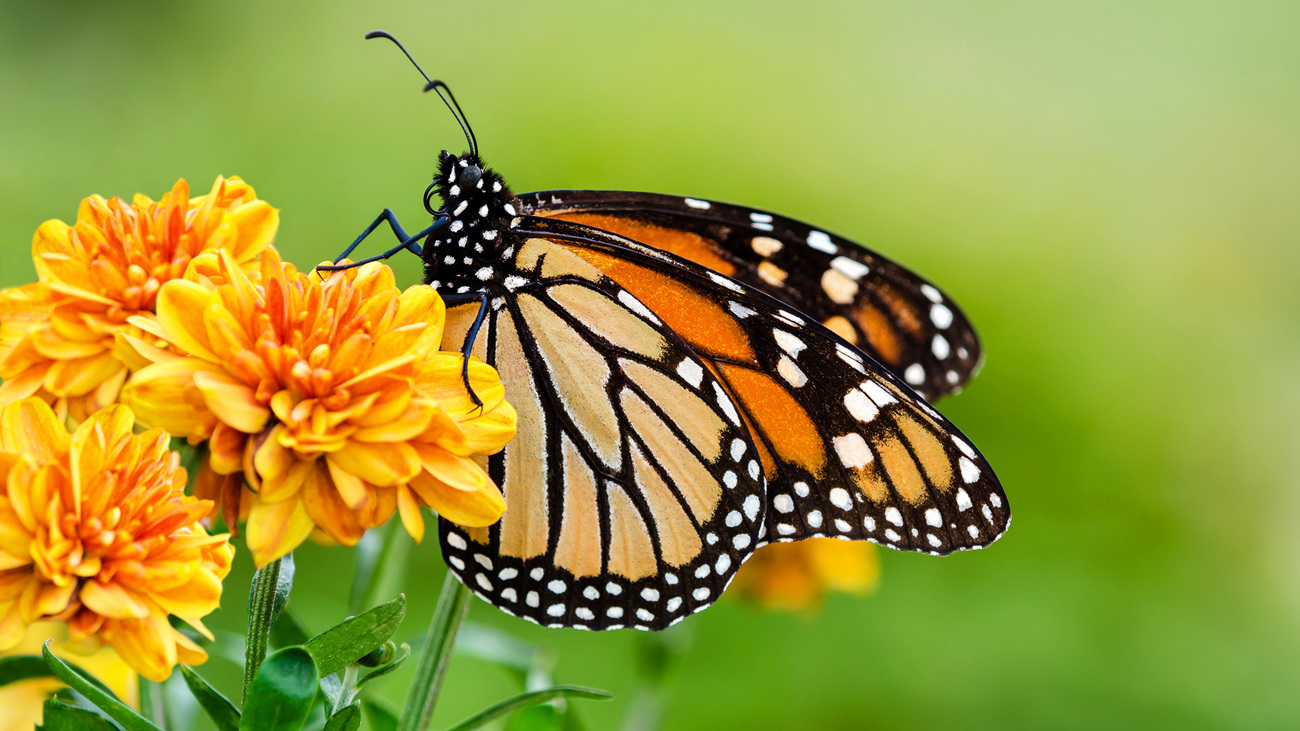
Flying as far as 4,800 kilometres (3,000 miles) to reach its winter home, the monarch butterfly (Danaus plexippus) is the only butterfly known to make a two-way migration like birds. They venture from as far north as Canada to Mexico, with many making their winter homes in the Sierra Madre mountains, where they roost in oyamel fir forests at elevations of 2,400 to 3,600 metres (nearly 2 miles above sea level).
The Western population of monarch butterflies stays in coastal California for the winter, which has similar climatic conditions to central Mexico. In California, tens of thousands of monarchs can gather on a single eucalyptus, Monterey pine, or Monterey cypress tree.
Just how these insects can find their way across the continent is still being studied. Scientists think they likely are aided by the Earth’s magnetic pull and the position of the sun. It takes 3-4 generations of monarchs to reach the US and Canada after they breed in Mexico.
Though threatened by habitat loss and climate change, monarch butterflies are listed as least concern on the IUCN Red List.
Pikas are small, mountain-dwelling mammals closely related to rabbits. There are two species of pikas native to North America, the American pika (Ochotona princeps) that lives in the Rocky Mountains, Sierra Nevadas, and Cascade Range and the collared pika (Ochotona collaris) found in Alaska, Yukon, British Columbia, and the Northwest Territories.
Pikas are known to bring hay and soft twigs into their burrows on rocky slopes to survive the winter. When diving into their burrows, they make a high-pitched alarm call, which gave them the nickname ‘whistling hares’.
Both species are classed as least concern on the IUCN Red List, but the temperature fluctuations caused by climate change are causing cold stress and heat stress among pikas, threatening their future survival.
The American eel (Anguilla rostrata) is born in the Sargasso Sea (around Bermuda) before swimming up to 10,000 kilometres (6,200 miles) to freshwater bodies, spanning from Greenland to Venezuela. They live for up to 40 years in freshwater and return once again to the Sargasso Sea to reproduce before they die. There is only one breeding population of American eels, and they only spawn once throughout their lives—always in this same location.
American eels are classed as endangered and are threatened by habitat destruction. Poaching of eels is also on the rise, both in Canada and the US.
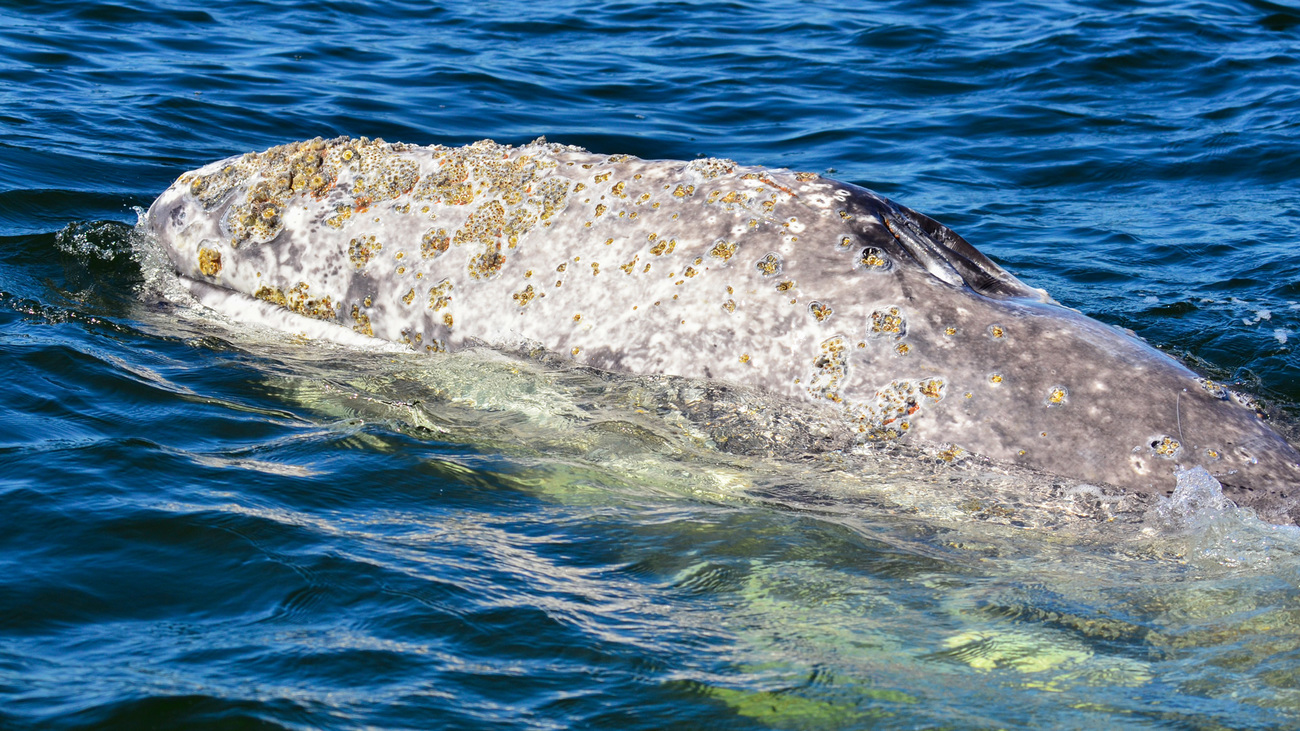
The grey whale (Eschrichtius robustus) is a baleen whale native to the east and west coasts of North America as well as Iceland, Japan, and the east coast of the Asian continent. Its population has been depleted to the point that grey whales have disappeared from the North Atlantic, thanks to commercial whaling. These whales now are found only in the Pacific, and they are classed as least concern.
Grey whales make an amazing migratory journey, swimming all the way from Laguna San Ignacio, Mexico, where they give birth, to the Bering Sea, which divides Russia from Alaska. In 2000, Mexico and the Mitsubishi corporation were going to construct a salt factory in Laguna San Ignacio, the grey whale’s last undisturbed nursery. Fortunately, IFAW’s campaign against it was able to stop this construction.
Vessel strikes and fishing gear entanglement also threaten the grey whale.
The mountain goat (Oreamnos americanus) is native to Alaska, western Canada, and the northwest contiguous US. Greyish white with long black horns, they are not actually goats and are instead part of the antelope family. Mountain goats are classed as least concern on the IUCN Red List.
Occupying high-altitude habitats typically above 3,000 metres (10,000 feet), mountain goats are fascinating for their ability to defy gravity and climb near-vertical cliffs. They can pull their entire bodies up steep inclines above 60 degrees using just one hoof. Living in the mountains helps protect them from predators. Counterintuitively, they move to lower altitudes in the summer, not the winter. Their migration is related to changes in food availability.
The Atlantic horseshoe crab (Limulus polyphemus) lives in the Gulf of Mexico and along the east coast of North America. The species is hundreds of millions of years old, possibly originated in the Paleozoic era, and once shared the planet with dinosaurs—though horseshoe crabs arrived long before them. Because they have changed so little over the course of history, horseshoe crabs are often referred to as living fossils.
Unfortunately, horseshoe crabs are listed on the IUCN Red List as vulnerable. In the past, they were harvested to make fertiliser. Today, they are harvested to use as bait and for the biomedical industry, as their blood contains a substance that can be used to test vaccines, drugs, and prosthetics.
Found in Mexico, the Caribbean, and Venezuela, the American flamingo (Phoenicopterus ruber) is known for its bright pink color, which derives from its diet of shrimp and algae, as well as its long, thin legs and neck and the way it sleeps standing on one leg. They nest in mud, making space for one large egg. Some raise their young in extremely salty waters that are too harsh for most other animals to survive.
While flamingoes’ knees are widely thought to bend backward, that is actually their ankle joint. Their real knees are hidden underneath their feathers.
Flamingoes are classed as least concern on the IUCN Red List, but they face habitat loss due to human activity and expansion.
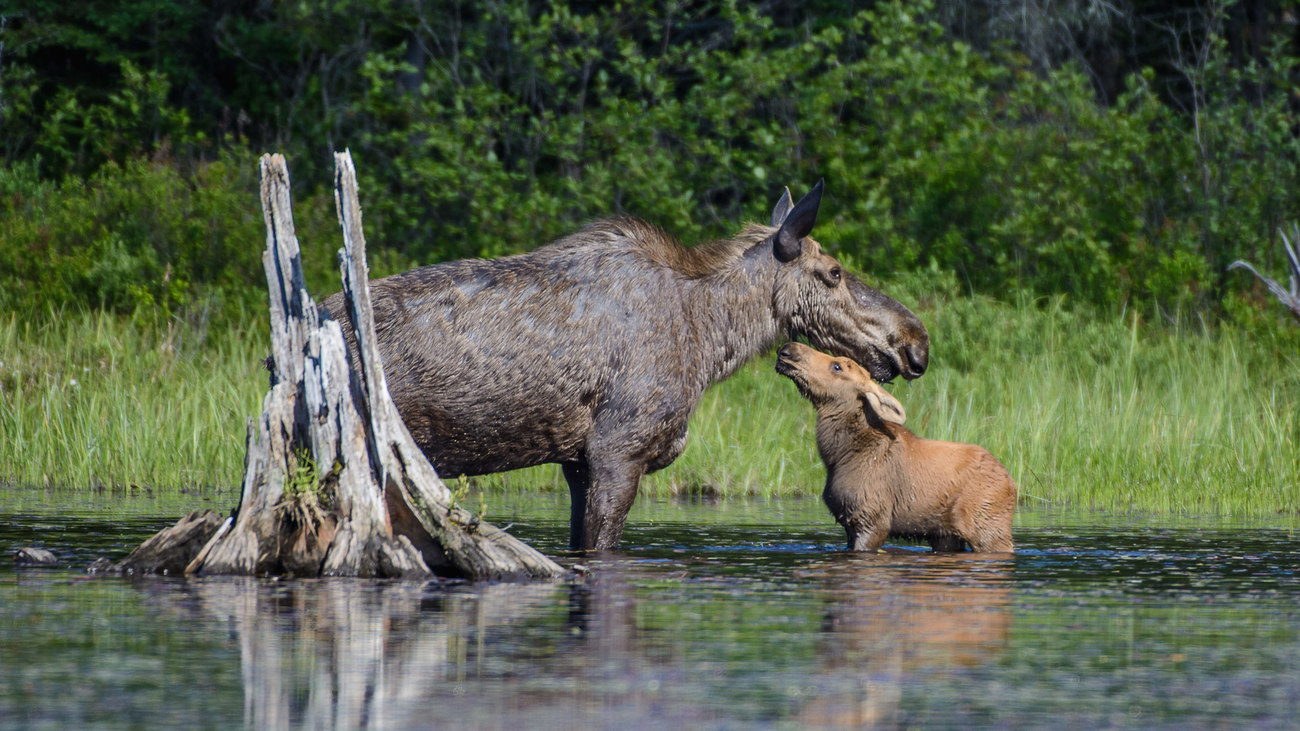
The moose (Alces alces) inhabits the northern US and Canada and northern regions of Europe and Asia. Moose are known for their huge antlers, which they shed during the winter and regrow in the spring. These antlers help male moose assert dominance and protect their eyes while competing for a mate. Female moose do not have antlers. Moose are classed as least concern on the IUCN Red List, but they do face human-caused threats to their habitats, including forestry and agriculture.
The primary prey of the Canada lynx, snowshoe hares (Lepus americanus) are known for their white fur and huge back feet. They live throughout northern boreal forest in the US and Canada and blend in well with their surroundings thanks to seasonal fur color changes—they’re brown in the summer and white only in the winter. Their large, webbed feet allow them to travel across the snow with ease. They are considered one of the most athletic hare species.
Though the snowshoe hare is considered least concern, southern populations may face habitat loss and fragmentation as well as the effects of climate change.
The axolotl (Ambystoma mexicanum) is a salamander species native to Mexico. In Aztec mythology, the axolotl is a disguise of the god of fire and lightning, Xolotl. They may seem mythological with their amazing ability to regenerate lost limbs and stay ‘young’ for their whole lives—unlike other amphibians, axolotls never outgrow their juvenile stage.
As of 2025, there are only 50-1,000 remaining individual axolotls, making them a critically endangered species. Axolotls’ range is restricted to just a few areas around Mexico City. Pollution and urbanization threaten their survival, and they were also historically captured for the exotic pet trade.
Help IFAW support animals in North America and around the world.
Our work can’t get done without you. Please give what you can to help animals thrive.
Unfortunately, the browser you use is outdated and does not allow you to display the site correctly. Please install any of the modern browsers, for example:
Google Chrome Firefox Safari